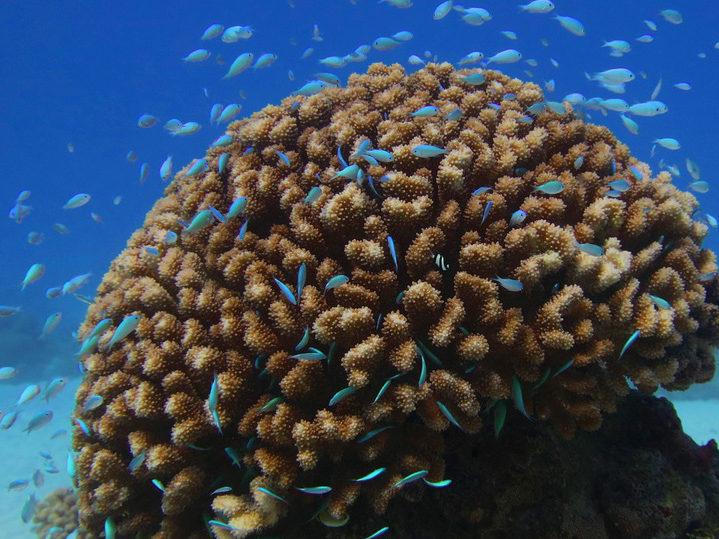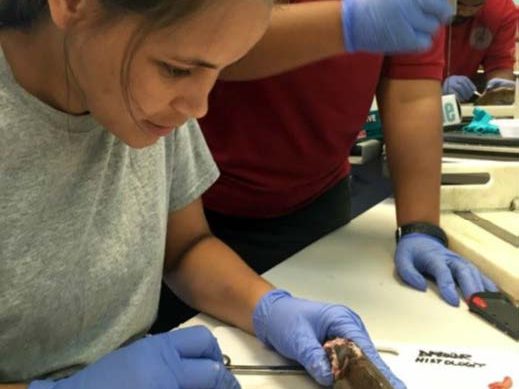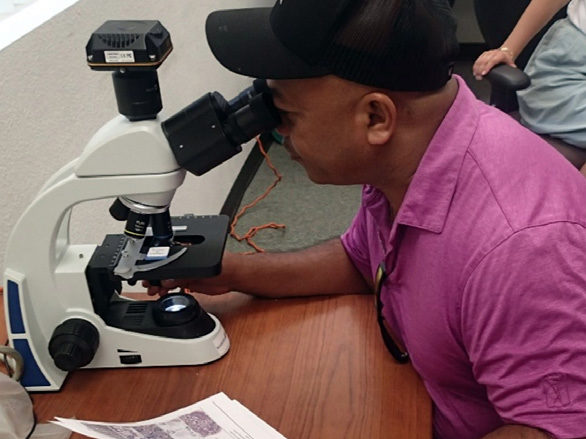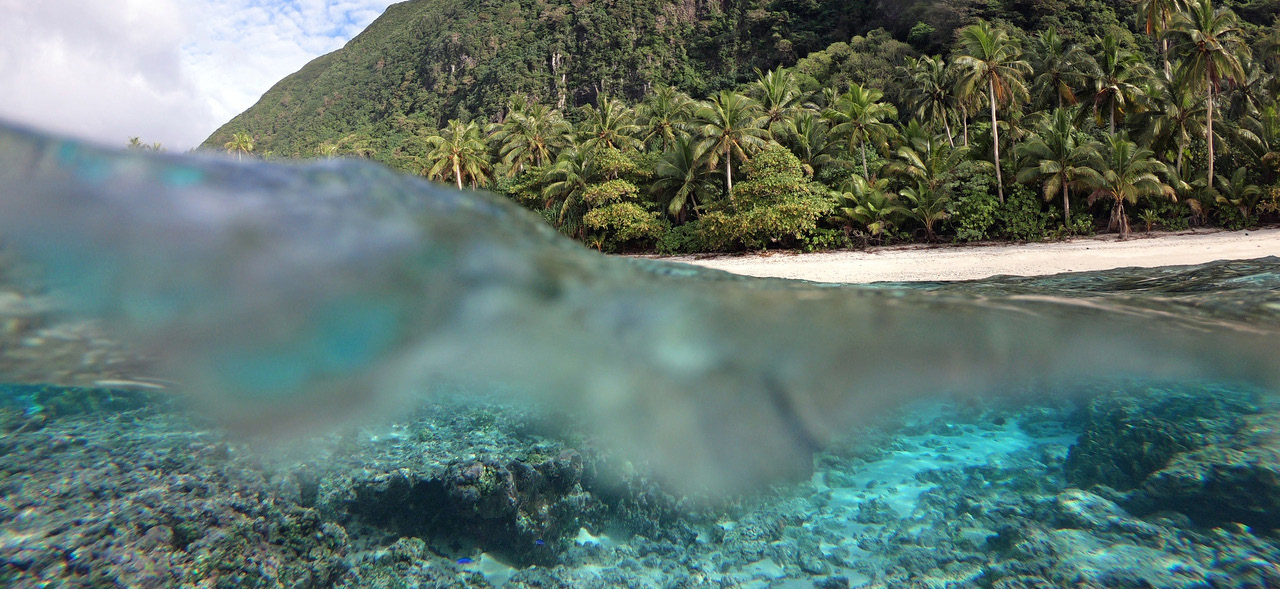Where We Work
American Samoa is an archipelago in the central South Pacific Ocean comprised of five volcanic islands (Tutuila, Ta‘u, Ofu, Olosega, Aunu‘u, Nu‘utele) and two coral atolls (Rose Atoll and Swains Island). The coral reefs and coasts of American Samoa are home to over 2,700 species of Indo-Pacific corals, invertebrates and fish. However, the reefs face negative impacts from local sources of pollution and sedimentation. Additionally, severe natural disturbances, including a major outbreak of crown-of-thorns starfish, several bleaching events and hurricanes, have impacted reef resources over the past several years.


Our Approach
Coral reef conservation in American Samoa is advanced by providing technical assistance and building the capacity of local government and community partners to support management efforts that increase the resilience of local reef systems. Partnership efforts focus on developing and delivering trainings to boost the effectiveness of marine protected areas (MPAs), monitoring efforts, strategic planning and advisory group development, as well as foster shared learning through regional learning exchanges.
Our Accomplishments
Our work has directly benefited approximately 50 square miles of coral reef habitat. Partnership efforts have provided technical support to 14 agencies and organizations, resulting in the training of 102 individuals on reef resilience principles.
- Developed strategic communications plans with eight agencies for climate change preparation projects to increase the effectiveness of work planned with local communities.
- Completed and formally adopted a Conservation Action Plan (CAP) with the village of Faga‘alu to assess the main threats to coral reef resources and develop strategies to reduce impacts from those threats.
- Trained 35 resource managers and users in data collection and stock assessment formulas. Participants were provided training on collection, life-history data processing and stock assessments (See Success Story on page 5).
- Trained 22 practitioners to create and manage effective projects. Participants learned how to manage project teams to execute coral conservation work.
- Facilitated an Organizational Management Workshop for the American Samoa Coral Reef Advisory Group (CRAG). Members and Staff assessed how CRAG functions and developed a plan for improving how CRAG supports coral reef management in American Samoa. In 2019 additional support was provided to assess plan execution and prioritize next steps for action.
- Hosted a collaborative workshop on reef resilience principles—the first of its kind in American and Western Samoa—for 32 individuals representing 13 groups. The workshop sparked a productive discussion on how a marine protected area (MPA) network could be created in the Samoan archipelago and developed recommendations to more efficiently implement the Two Samoas Initiative, a partnership to promote conservation of the shared ecosystems of the Samoan archipelago.
- Coordinated and implemented learning exchanges to share successes and lessons learned between partners, foster better understanding of community-led marine stewardship and catalyze on-the-ground action.
- Managers and practitioners from Micronesia visited American Samoa to share their experience implementing the Micronesia Challenge. Participants were exposed to the concept of MPAs as mixed-use areas, community-based management approaches and the value of incorporating traditional knowledge in the management process.
Enjoyed the workshop; learned how to read the data that was collected. Learned the different stock assessment formulas and how to apply them.


SUCCESS STORY: Using Data-Poor Stock Assessments to Improve Coral Reef Fisheries Management
Coral reef fisheries are a central component of Pacific Island societies. The management of these dynamic multi-species fisheries is complex, and further hindered by limited local capacity for science-to-management translations.
Limited Data Shows a Need for More
While studies of coral reef fisheries in American Samoa are limited, anecdotal evidence suggests an undesired effect on stocks, especially on more vulnerable species. Additional studies based on fisheries-independent datasets indicate a lower-than-expected fish biomass, especially among medium and large-size species, with direct links between decreasing herbivore fish biomass and coral reef resilience (Fenner et al., 2008; Houk et al., 2010).
The Partnership and Training Increase Capacity
Through the Partnership, thirty-five resource managers and users in American Samoa were provided training on collection, life-history data processing and stock assessments. Equipped with these new skills, managers and fishers worked together to conduct stock-assessments of three target species identified as priorities
by local partners. These species were: Naso lituratus (Orangespine Unicornfish/ili‘ilia); Lethrinus rubrioperculatus (Spotcheek Emperor/fiola pa‘o‘omumu); and Chlorurus japanensis (Palecheek Parrotfish/fuga-alosama).
Data Collection Goes to Market
Samples from each of the prioritized species were collected from local markets. Otoliths and gonads from each fish were processed to assess its age and growth. Participants then used the life-history information of each species to conduct formal stock assessments using the Froese Sustainability Indicator assessment. The results suggested the species studied had healthier stocks and helped to guide management decisions.
Success Leads to More Good Work to Come
The positive impacts of this project were many. In addition to providing critical skills to American Samoa managers, the project rallied the active participation of fishers and laid the foundation for more robust data collection and a more collaborative and inclusive fisheries management practice.
Based on this early success, local managers hope to expand this work to include other fish species in the near future. Armed with these skills and new data, managers and fishers can establish sustainable harvesting levels to ensure sustainable fisheries and healthy ecosystems.

